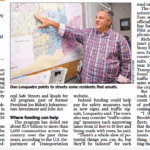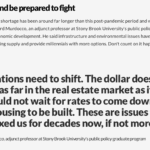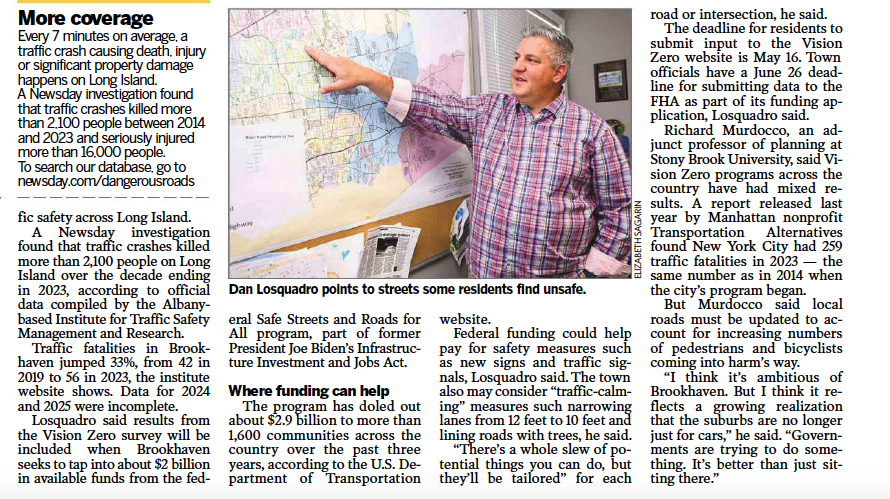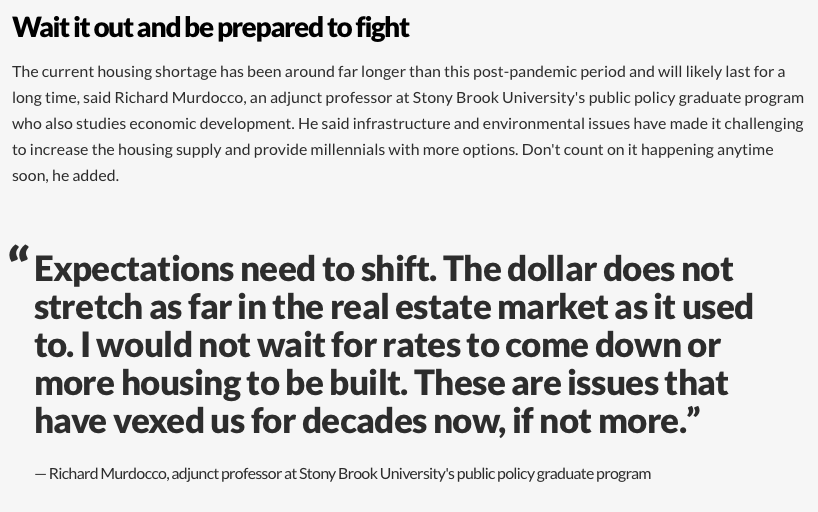Often, I’ve written regarding the merits of diversification. In order to succeed, Long Island needs to take a holistic look at its regional economy, and work to diversify industries beyond the retail and hospitality sectors. The argument for diversification goes beyond economics – our approach to development must be diversified as well. In recent years, there has been a troubling trend that has emerged across Nassau and Suffolk counties.
Brain Drain. Downtowns. Millennials. Every published news story written on our housing issues reads like a twisted game of mad libs, with the same players being quoted and the same outcome being touted.
The same stale vision is driving Nassau and Suffolk counties to the same flawed destination.
At this point, writing on the subject is similar to playing a broken record, but these critically important topics keep getting misrepresented in enough media mentions, conferences and public comments to warrant written responses. Why do these buzzwords keep being resurrected? They amount to a convenient narrative. The groups maintaining this narrative have the fiscal resources to pound the flawed message time and time again until, like in George Orwell’s “1984,” it’s just accepted.
It’s time for a wake-up call. Downtown development is a legitimate planning concept since the early days of regional planning efforts on Long Island. The problem is, it’s one solution needed out of many. Let’s tackle the elephants in the room that these groups avoid, because they are afraid to disrupt a constructed narrative.
You want to maintain Long Island’s millennial population? Housing is one piece of the puzzle. The big draw to keeping this generation? Give millennials ample financial opportunities to stay on Long Island.
How? Stop building mixed-use apartments with retail on the ground floor. Overall, the big hurdle is diversifying Long Island’s economy so that we can take advantage of our highly educated workforce. Make Long Island attractive enough for them (or someone from somewhere else) to come back.
You want to diversify Long Island’s housing market? Bring down the astronomical cost of living here on Long Island – mostly driven by the ample amount of property taxes given to school districts.
How? Seriously begin to consider consolidation and elimination of redundant municipal services.
Some argue for more localism, but you know what’s the end product of subscribing to such localism? Paying more than two-thirds of your tax bill to school districts, as residents do in the Town of Smithtown: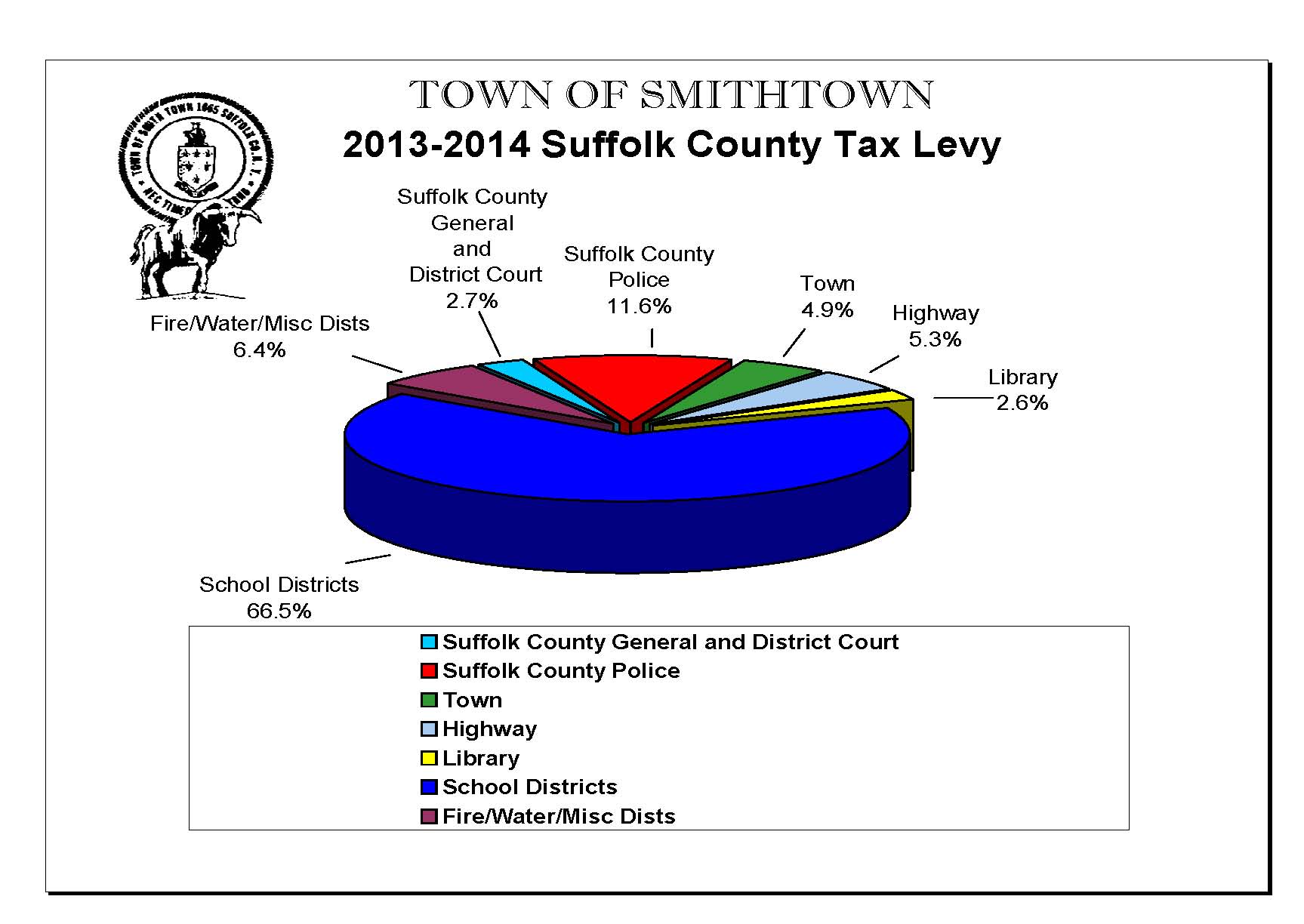
You want to have your voice heard? Participate in the civic process. Overall, our regional conversation on the issues has been dominated by two age groups: the elderly and millennials. Long Island’s older population have been the beneficiaries of countless age-restricted developments that have cropped up in recent years. The question is, what will happen as Long Island’s population trends cycle, as they tend to do?
The millennials, more so than the elderly, have commandeered the discussion because they represent “the future.” They also represent an opportunity for developers to ramp up density. Conveniently, millennials have fit the bill – they are young and they allow for an excuse to up density in a region where it is shunned. Instead of confronting our affordable housing shortage head-on, Long Island’s municipalities are catering their efforts to one age group, which is dangerously shortsighted. Developers will pursue the path of least resistance. It’s not their responsibility for sound policy, but to make money. Protection of the public good is the government’s job. This is why they must embrace true urban planning efforts that are not only data-driven (of which the data of the brain drain concept is considered faulty), but captures all age groups.
Lastly, we need to stop allowing stakeholders to drive our policy. As I wrote in May 2013:
To put it in perspective, this is like putting a Texas oil man in charge of our alternative energy policy. How about we put executives from Ford, Chrysler and GM in charge of alternative transit options? Yes, they would be experts, but are they the experts we want considering the task at hand?


